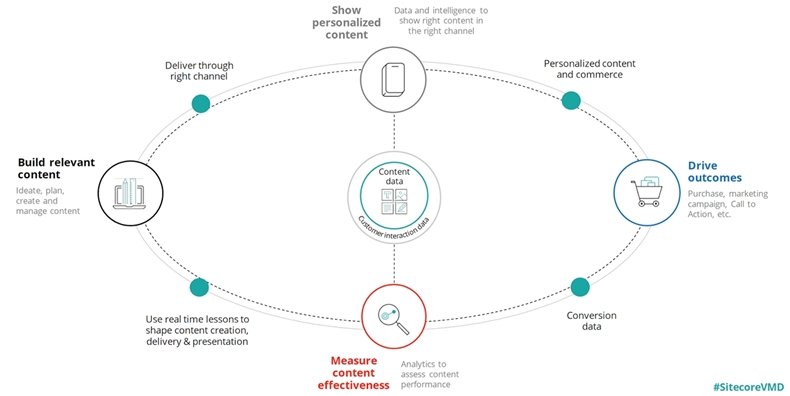In today's digital world, content is currency. To personalize customer experiences across channels, B2B and B2C marketers alike create content for four different audiences, on average, and 28% of B2C marketers, and 22% of B2B marketers, create content for more than six audiences, on average.
Delivering personalized content for various audience segments is the goal of every ambitious company. But the road leading to that goal is proving to be treacherous as marketing leaders point to content creation pain points, including deficiencies in speed (44%), budget (39%), and automation tools (39%).
The Content Crisis: How to Thrive in a Content-Driven Digital World
The content crisis can be summarized thus: Both B2C and B2B brands have a growing need for more content despite the challenges associated with creating, managing, and publishing content at scale.
Without a large volume of content that's tailored to different customer segments, delivering effective personalization at any scale becomes much more challenging.
The biggest obstacle is often a brand's CMS—the very platform they depend on to manage and publish the content they work so tirelessly to produce. Fully 73% of marketers say they either don't have the right technology for content management and strategy or they are not using the technology they have in the most optimal way.
Presenting at Sitecore Virtual Marketer Day 2020, Sitecore Global VP of Product & Industry Marketing Vijayanta Gupta, alongside General Manager at Star Cooperation Laura Marie Opperman shared how Star Cooperation led a renowned German automotive manufacturer to success by tailoring content for a globalized audience.
In short, the company was having a content crisis of its own. The marketing team had several challenges facing them, including the management of technical vehicle information, images, descriptions, and other marketing materials from various agencies.
The solution came in the form of technology that seamlessly connected to third-party systems and intelligently understood the relationship between different pieces of content, enabling the marketing team to produce content at scale for different markets, channels, and personas.
So, how can brands replicate the success of Star Cooperation and fuel their personalization strategies?
Technology: Mastering the End-to-End Content Lifecycle
Just 5% of marketers say they have developed a completely systematic approach to producing, managing, and distributing content, while 69% of marketers agree that while there are "some systems in place, there is still a lot of manual work," according to CMI.
When content is fragmented across multiple platforms and technologies, hidden within silos, it's hard for marketers and content authors to see what content already exists and to easily locate content that's been tagged for specific audiences at specific points in the customer journey.
To improve the content supply chain, brands need to understand and master the end-to-end content lifecycle, illustrated here:
With a traditional CMS, difficulties arise with the steps around planning, collaboration, personalization, and omnichannel delivery of content.
A traditional CMS was really only intended to give marketers a WYSIWYG interface to create content, store that content, and then display it via a website. Moreover, traditional systems are rarely equipped to measure the effectiveness of content through A/B-testing and conversion rate analysis.
All those technological weaknesses hamper brands when they're attempting to produce, publish, and measure personalized content at scale.
Going Beyond Traditional Content Management
Today's challenges require a more granular approach to omnichannel content management, whereby marketers and content authors can...
- Ideate, collaborate, and communicate regarding potential content ideas
- Create, modify, and publish content across all channels, just as they always have done with a traditional CMS for websites
- Create and tag personalized content to be displayed to specific segments at specific points in the customer journey
- Drive and measure outcomes to further feed their content ideation processes, thus completing the cycle
Leveraging a combination of Sitecore Content Hub, Sitecore Experience Platform (XP), and Sitecore Experience Commerce (XC), globally recognized brands, including L'Oréal, Swire Properties, and Subway, have been able to build upon what a traditional CMS offers, master their content lifecycle, and kickstart their journey to offering personalized content across channels.
It's Time to Make Each Piece of Content Purposeful
As digital behemoths continue to captivate consumers with hyper-personalized content, it has become essential for growth-seeking brands to master their own content lifecycle and fuel personalized experiences.
However, without the right technological foundations in place at your company, your customer experiences will suffer from a lack of content and your brand will struggle to inspire its various customer segments.
With all of that in mind, every brand should ask itself the following question: In a world where personalized customer experiences are now expected as standard, where does that leave us?
Learn more about content hubs.






